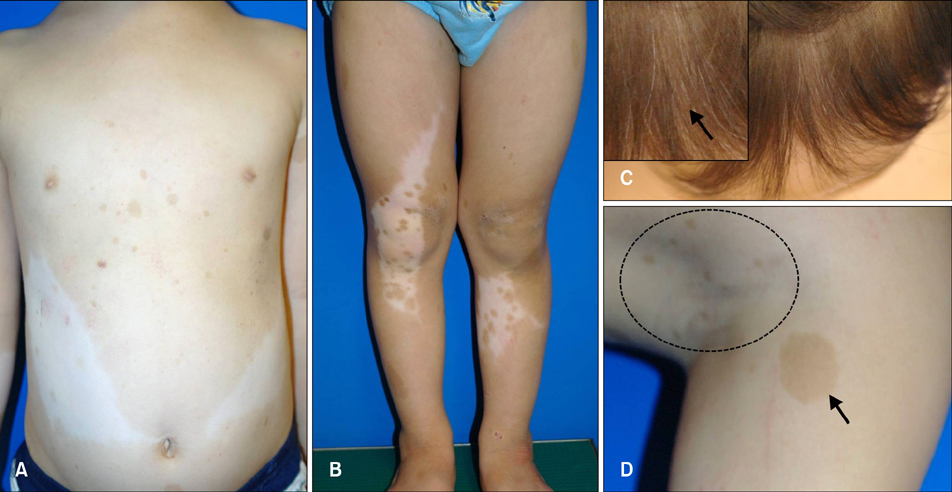Ann Dermatol.
2014 Apr;26(2):264-266. 10.5021/ad.2014.26.2.264.
Piebaldism with Neurofibromatosis Type I: A Familial Case
- Affiliations
-
- 1Department of Dermatology, Yonsei University Wonju College of Medicine, Wonju, Korea. ahnsk@yonsei.ac.kr
- 2Department of Dermatology, Atopy and Asthma Center, Seoul Medical Center, Seoul, Korea.
- KMID: 2171670
- DOI: http://doi.org/10.5021/ad.2014.26.2.264
Abstract
- No abstract available.
MeSH Terms
Figure
Cited by 1 articles
-
Piebaldism Associated with Café-au-lait Macules and Intertriginous Freckling: A Case Report and Review of the Literature
Sevgi Akarsu, Turna İlknur, Ceylan Avcı, Emel Fetil
Ann Dermatol. 2019;31(5):567-570. doi: 10.5021/ad.2019.31.5.567.
Reference
-
1. Richards KA, Fukai K, Oiso N, Paller AS. A novel KIT mutation results in piebaldism with progressive depigmentation. J Am Acad Dermatol. 2001; 44:288–292.
Article2. Thomas I, Kihiczak GG, Fox MD, Janniger CK, Schwartz RA. Piebaldism: an update. Int J Dermatol. 2004; 43:716–719.
Article3. Neurofibromatosis. Conference statement. National Institutes of Health Consensus Development Conference. Arch Neurol. 1988; 45:575–578.4. Tay YK. Neurofibromatosis 1 and piebaldism: a case report. Dermatology. 1998; 197:401–402.
Article5. Chang T, McGrae JD Jr, Hashimoto K. Ultrastructural study of two patients with both piebaldism and neurofibromatosis 1. Pediatr Dermatol. 1993; 10:224–234.
Article
- Full Text Links
- Actions
-
Cited
- CITED
-
- Close
- Share
- Similar articles
-
- Piebaldism Associated with Café-au-lait Macules and Intertriginous Freckling: A Case Report and Review of the Literature
- Piebaldism: a case report
- A Case of Piebaldism Associated with Strabismus and Torticollis
- A Case of Orbital Neurilemoma Associated with Neurofibroma tosis
- Four Generations of Piebaldism



